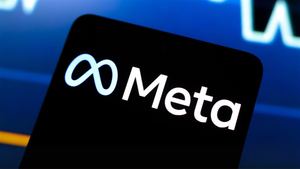As UK driving test pass rates remain below 50% and waiting times stretch beyond five months in some centres, thousands of learner drivers are increasingly turning to digital tools for an advantage. One of the most debated methods is practising driving test routes. Some see it as sensible preparation, while others regard it as “cheating” the system.
Disclosure: This release contains affiliate links. Some links may generate a commission if readers choose to subscribe or make a purchase, but this does not affect the price paid by the consumer.
A tougher test than ever
Government data shows the car practical test pass rate has held steady at around 47% (DVSA, 2023/24).
Compared to 20 years ago, the test is considerably more challenging. Since 2017, candidates have been required to drive independently for 20 minutes, and most tests now include sat nav driving (DVSA, Driving test changes in 2017). Learners must also navigate multi-lane roundabouts, complex junctions, and rural high-speed roads that can pose a challenge even to the most confident drivers.
Failing once adds to the frustration. Although candidates are only required to wait a legal minimum of 10 working days before booking again (Gov.uk – Car driving test results), in reality, the backlog means most face a delay of 18 to 20 weeks on average, with some centres exceeding 5 months (The Guardian, July 2024).
DVSA once published routes, then banned them
Until 2010, the DVSA (then the DSA) openly published its official driving test routes. The practice was scrapped amid concerns that learners were memorising them instead of demonstrating safe, adaptable driving (Road Safety GB, 2010).
A divided industry
The issue splits instructors and examiners alike:
- Critics argue it’s little more than gaming the test, eroding the unpredictability designed into the exam.
- Supporters say it’s no different to practising past exam papers, helping learners tackle known “hot spots” and easing crippling nerves on the day.
What’s undeniable is the spike in demand. Google Trends data shows search interest in “driving test routes” has climbed steadily in recent years, reflecting learners’ desperation to secure every possible edge.
RouteBuddy: crowdsourced routes with AI support
At the heart of this shift is RouteBuddy, an app used by thousands of learners across the UK. It offers practice routes around local test centres by combining:
- Instructor submission - with Approved Driving Instructors uploading and refining the most frequently used roads.
- AI predictions - which estimate the most likely routes based on data patterns.
- Community feedback - where learners and instructors comment on changes and keep routes up to date.
The result is a constantly evolving set of routes that many learners say improves their confidence and, in some cases, their pass rates.
The ethical question
Does practising these routes give learners an unfair advantage, or is it simply smart preparation in a system where failure means months of waiting? The DVSA designs tests to be flexible, and examiners can adjust the route at any time. Still, with thousands now using RouteBuddy and passing their tests, the debate over fairness is set to continue.
Key facts
- Pass rate (car practical test, GB): 47.0%
- Average waiting time: 18–20 weeks; some centres >5 months
- Retake gap: minimum 10 working days after failing
- Sat nav usage: 4 out of 5 tests since 2017
- DVSA stopped publishing routes in 2010
Media Contact
Company Name: Media Press
Contact Person: Media Press
Email: Send Email
Country: United Kingdom
Website: https://www.fiverr.com/s/wkQV9oo






